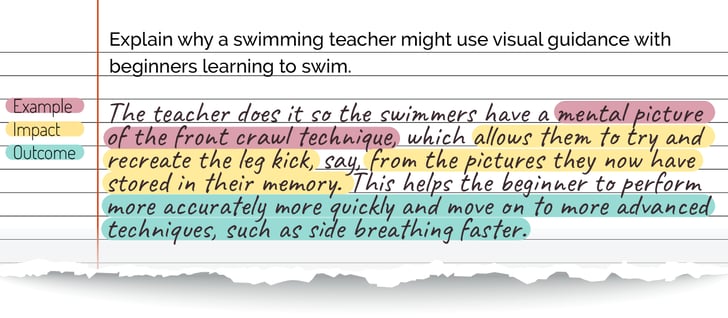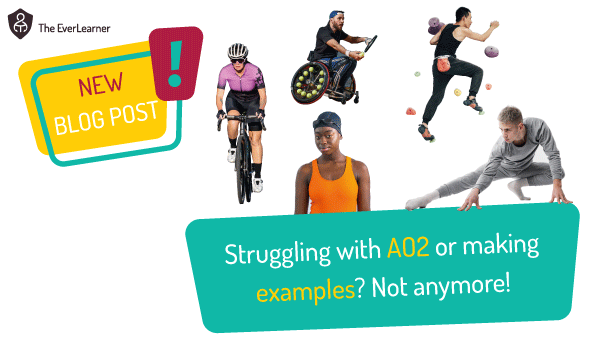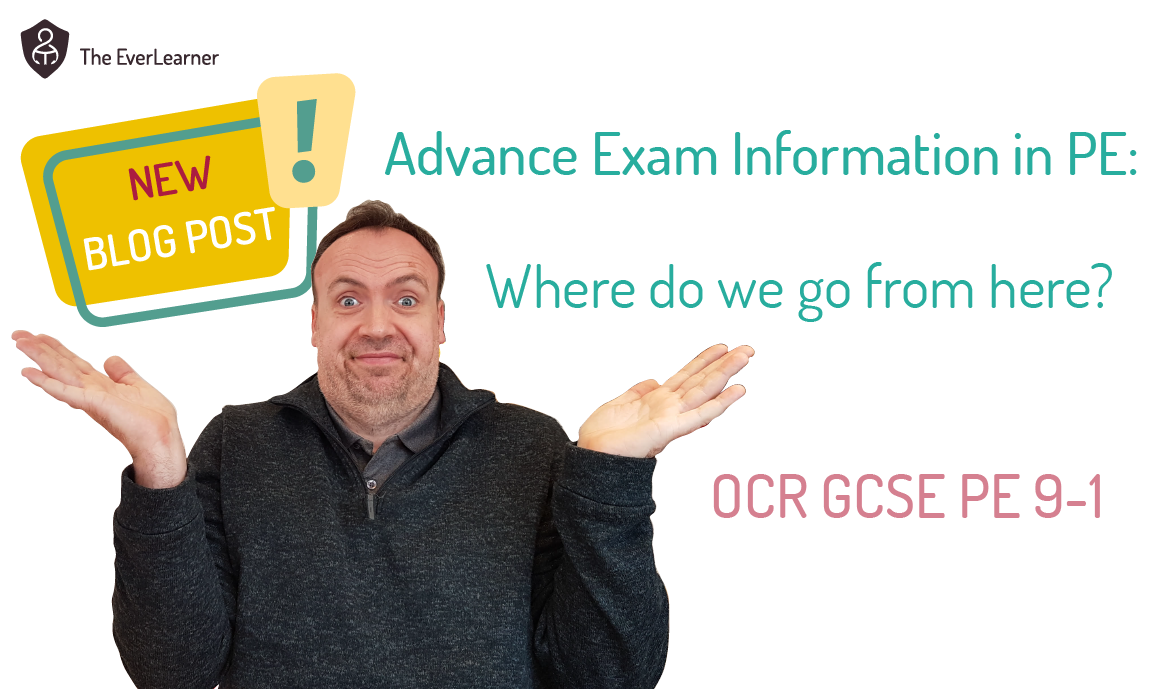The E-I-O Model: Scoring higher on AO2 in PE exams
Have you ever noticed that students in PE lessons and exams (and end-of-unit tests and mock exams, etc.) sometimes struggle to take their knowledge and apply that knowledge to real-world performances, movement and health (often the AO2 skill)? I have. A lot! If you have too, what conclusions have you come to about the cause of this?
Download the FREE resources now but don't forget to read the whole article...
One of the reasons I have heard given a great deal by teachers is that students don’t have a wide range of knowledge of different types of activities and, therefore, they struggle to apply their learning to movement examples from gymnastics, dance, games, outdoor adventure, swimming or athletic activities. There may well be some truth to this. I think it is fair to suggest that the majority of students studying AQA GCSE PE, say, don’t have an intricate knowledge of Gaelic football, for example. But, it’s also important to recognise that the exam boards try very hard to keep their exam-based applications to well-known activities and contexts, so the odd “rogue” question is probably not the cause of a sector-wide issue. If we were to estimate the number of applications that are requested in PE exams that sit outside of a typical core PE experience that all students have, I believe it would remain very few.
Other teachers have told me that it is about exam technique. Students aren’t sure how to make examples if they are asked for one. It is here that I wish to focus my attention:
For a few years now, I have been working with the E-I-O model and introducing this to students from the very first lesson of their qualification (and, where relevant, earlier during Q&A sessions in practical core PE lessons). The E-I-O model enforces (strong term but I’ll go with it) the need for the student to consider and respond with the impact and outcome of their example.
Let’s look at this in context.
A student receives a question. This question/command could have been asked during a practical core PE lesson, in a written test or even in an exam in, let’s say, GCSE PE:

At this point, I want you to look at the following response and determine its quality:

So, what do you think? Is it “correct”? Is it a “good answer”? Is there any other understanding that the student must, presumably, have in order to make that statement that has gone unexplored or has not yet been made explicit?
Let’s take a second question:

Look at the following response and determine its quality:

For the sake of breadth, let’s take one more example:

Look at the following response and determine its quality:

In all three cases, I, once again ask the following:
- Is it “correct”?
- Is it a “good answer”?
- Is there any other understanding that the student must, presumably, have in order to make that statement that has gone unexplored or has not yet been made explicit?
The last of these questions is the important one. What does the student(s) know in order to make the example that has not been explored or made explicit?
In my opinion, none of the answers above are of sufficient quality to be considered complete, applied or expansive.
This is where the E-I-O model helps us.
Let’s take the third question and previous response:

If we place this into the E-I-O model, we get this:

In other words, the student has made the Example (E) only and has not gone on to explain the Impact (I) and Outcome (O) of this process.
Let’s add the Impact (I):

So, the beginner swimmer is now impacted by the visual guidance in relation to their front crawl but, crucially, we can take this further by adding an Outcome (O):

In this final response, the idea that the student has begun with has been †fully explored and impact and outcome have been included.
†One can always take things further, of course.
To ratify this process, let’s take the first question and previous response:

The question was: Explain how agility contributes to the performance of basketball.
The answer was: Agility is important when you’re dribbling.
If we place this into the E-I-O model, we get this:

Once again, the student has made the Example (E) only and has not gone on to explain the Impact (I) and Outcome (O) of this process.
Let’s add the Impact (I):

So, the basketball player now evades defenders and finds space but what is the outcome of this? Let’s add the Outcome (O):

Once again, the idea that the student has begun with has been †fully explored and impact and outcome have been included.
†One can always take things further, of course.
Now, it’s all well and good simply stating that students should use an E-I-O model. If we do this, motivated, focussed students will benefit because they will think it through and apply the model. However, there is another approach which is more complete. The E-I-O model can become part of the standard behaviour and expectation of PE teachers within a department within every lesson.
It is worth adding here that if you are using the E-I-O model with exam groups, it is not only AO2 that will improve. The E-I-O model also supports students achieving AO3 because outcomes are often judgments (evaluate) skill and it is these types of statements that help students achieve AO3 points.
For these reasons, I have chosen to provide these two resources to you all.
The first resource is one which I encourage you to print, laminate and place on your PE office wall, ideally in a prominent spot so that teachers can see it regularly. This is a teacher resource and encourages colleagues to explore examples with students using the E-I-O model.
The second is a resource that students can use when they are pondering examples they are going to make when answering questions either verbally or in writing by utilising the E-I-O model. This resource would be ideal to use in the early stages of your introduction of the E-I-O model to the learners.
The resources are utterly free and, by downloading them, you will also receive new and upgraded associated materials that are part of the E-I-O series. The E-I-O series will be released – again utterly freely – between now and the end of the summer term 2023. For example, I am going to publish a series of performer profiles very soon that can be used to challenge students when they make examples. This will be made available first to teachers who have downloaded the E-I-O resource, so I encourage you to do so today. 🙂
Finally, I want to make colleagues aware that I provide training to PE departments including the use of the E-I-O model. For example, in a recent training session, I provided guidance to an AQA GCSE PE centre on the following:
- Data analysis - What does the AQA GCSE PE require of students and teachers?
- AQA GCSE PE Yearly planning - Structuring the course to achieve success
- Paper 1 - Preparing students for writing outstanding Paper 1 exam responses
- Paper 2 - Preparing students for writing outstanding Paper 2 exam responses
- The E-I-O model - Adding value by achieving higher on AO2
- AO3 commands - Helping students analyse, discuss, evaluate, and justify better
- Extended writing - Using the TEL six- and nine-mark answering structures to improve performance
I provide this type of service across all GCSE, A-level and sport and PE technical qualifications but, please note, I provide a maximum of ten total days per academic year "in schools". I do this to enable me to provide the right level of quality and to ensure that my co-work on The EverLearner Ltd is not compromised. If you would like to acquire my time for 2023/24 before others do, please get in touch here.
Thank you for reading and have a great day.
James
%20Text%20(Violet).png)


